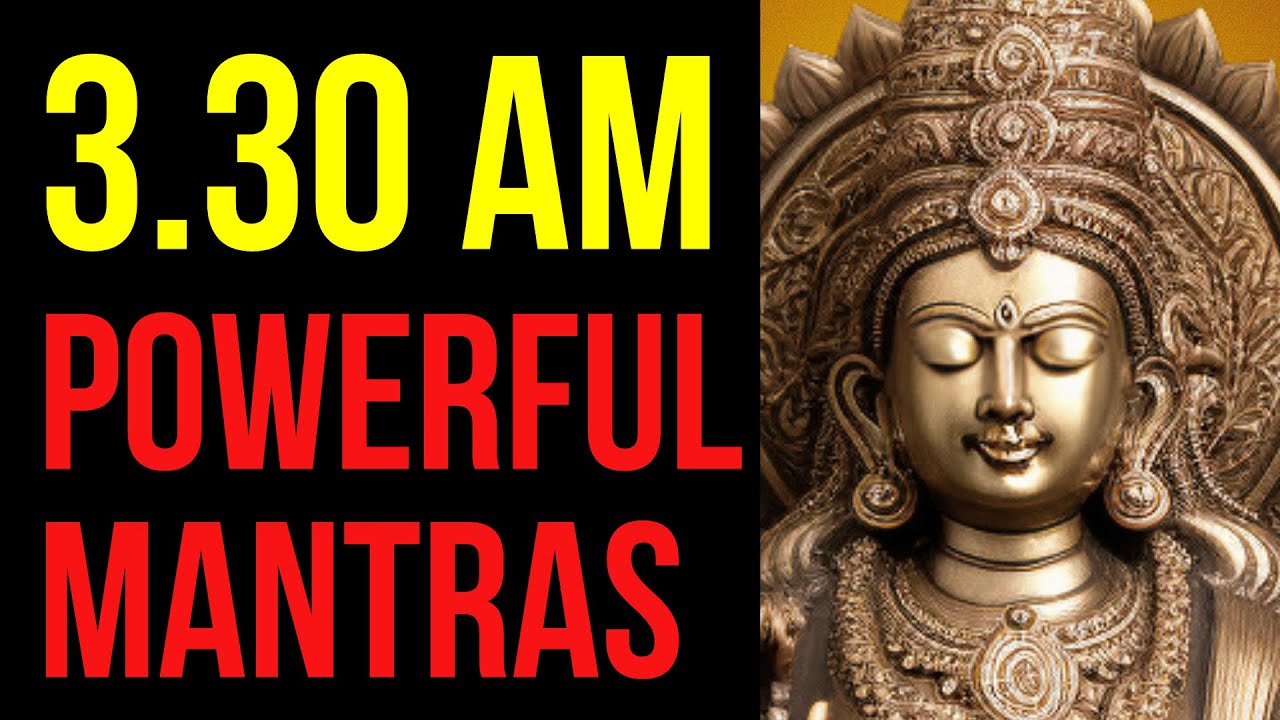Dogs - Teachers of Real Gratitude | His Voice #36 | Sri Guruji Lecture Series
Summary
TLDRThe video script explores a spiritual and musical journey, incorporating sacred chants and divine references. It begins with references to Brahma, the sage, and Arunachal Ishwar, followed by the invocation of water and creation. The chanting of 'Hare Ram Hare Ram' and 'Hare Krishna Krishna Hare Hare' forms the core of the narrative, emphasizing devotion and the power of mantras. The blend of music, spirituality, and philosophical concepts invites the audience to reflect on divine energy and the eternal cycle of creation.
Takeaways
- 😀 The script features a musical sequence intertwined with spiritual references, including chants and invocations.
- 😀 The term 'भगवान ब्रह्मा' (Bhagwan Brahma) refers to the Hindu god of creation, establishing a divine theme in the script.
- 😀 'अरुणाचल ईश्वर' (Arunachal Ishwar) signifies a reference to a deity from the Arunachal region, possibly a local or regional divine entity.
- 😀 The word 'विक्रम ओड़िआ' (Vikram Odiya) could refer to a name or a location, perhaps invoking a cultural or geographical context.
- 😀 The script includes the recurring phrase 'हरे राम हरे राम राम हरे हरे कृष्ण हरे', a popular Hindu mantra that is often chanted for devotion and peace.
- 😀 The repetition of the mantra suggests a focus on spiritual invocation or prayer, emphasizing its significance in the script's theme.
- 😀 The inclusion of 'कृष्ण कृष्ण' and 'हरे कृष्ण' emphasizes devotion to Lord Krishna, a major deity in Hinduism.
- 😀 The use of the word 'सृष्टि पानी' (Srishti Pani) can be interpreted as 'creation water,' potentially symbolizing divine creation or cosmic forces.
- 😀 The name 'नंदिनी' refers to a goddess or divine figure, commonly associated with a nurturing or motherly role in Hinduism.
- 😀 Overall, the script mixes spiritual devotion, chanting, and references to Hindu deities, creating an atmosphere of reverence and divinity.
Q & A
Who are the key figures mentioned in the transcript?
-The key figures mentioned in the transcript are Lord Brahma, a sage (Rishi), Arunachala, and Lord Krishna.
What is the significance of Lord Brahma in Hinduism?
-Lord Brahma is one of the three principal deities in Hinduism, known as the creator of the universe in the trinity (Trimurti) along with Vishnu (the preserver) and Shiva (the destroyer).
What does the name 'Arunachala' refer to?
-Arunachala refers to a sacred hill in Tamil Nadu, India, which is considered a manifestation of Lord Shiva. It is a prominent pilgrimage site for devotees.
What is the meaning of the repeated chant 'Hare Krishna, Hare Krishna, Krishna Krishna, Hare Hare'?
-The chant 'Hare Krishna, Hare Krishna, Krishna Krishna, Hare Hare' is a mantra that is part of the Hare Krishna movement. It is a devotional chant used to invoke the divine presence of Lord Krishna and is believed to bring spiritual enlightenment and peace.
What is the role of music in the transcript?
-Music plays a central role in the transcript, appearing repeatedly throughout the text, possibly as part of a devotional or spiritual practice, helping to create a sacred atmosphere and aid in meditation or worship.
What is the meaning of the word 'Srishti' mentioned in the transcript?
-'Srishti' is a Sanskrit term meaning 'creation.' In the context of Hindu cosmology, it refers to the process by which the universe and all living beings are created by Lord Brahma.
What does the name 'Nandini' symbolize?
-Nandini is a name used to refer to various Hindu deities, often associated with divine motherhood or the mother goddess. It also refers to a sacred cow in some traditions, symbolizing abundance and prosperity.
What is the significance of 'Vikram Odiya' in the transcript?
-The name 'Vikram Odiya' could refer to an individual or a title, but the context is unclear. It might refer to a specific regional or cultural reference, potentially linked to Odisha, India, where 'Odiya' is the language and cultural identity.
How does the repetitive chanting of 'Hare Krishna' function in Hindu rituals?
-The repetitive chanting of 'Hare Krishna' is a form of Bhakti yoga, a devotional practice aimed at cultivating love for God. It is believed to purify the mind and soul, and it is often used in prayer or meditation to maintain focus on the divine.
What is the connection between Lord Krishna and the chant in the transcript?
-Lord Krishna is the central figure of the chant. The phrase 'Hare Krishna' invokes Krishna's divine energy and is a way for devotees to connect with him spiritually. Krishna is seen as the ultimate godhead in the tradition of Gaudiya Vaishnavism, the sect from which the chant originates.
Outlines

This section is available to paid users only. Please upgrade to access this part.
Upgrade NowMindmap

This section is available to paid users only. Please upgrade to access this part.
Upgrade NowKeywords

This section is available to paid users only. Please upgrade to access this part.
Upgrade NowHighlights

This section is available to paid users only. Please upgrade to access this part.
Upgrade NowTranscripts

This section is available to paid users only. Please upgrade to access this part.
Upgrade NowBrowse More Related Video

Why kumbhakarna sleep so much| kumbhakarna details in Kannada| story fellow

Telugu Christian Song - Manasa - Manasa - | Bro. John Bilmoria | Lois Raj |

Patriji's Jayaho Song | Patriji | PMC English

Radhe Govinda — Radhika Das — LIVE Kirtan at Union Chapel, London 2024

वैष्णव कृपा और संगति के पंच मार्ग | 5 ways to attain the mercy & association of pure devotees

Bramha Muhurta Mantras for SUCCESS AND ABUNDANCE | Gayatri Mantra & Shiva Dhyana Mantra
5.0 / 5 (0 votes)